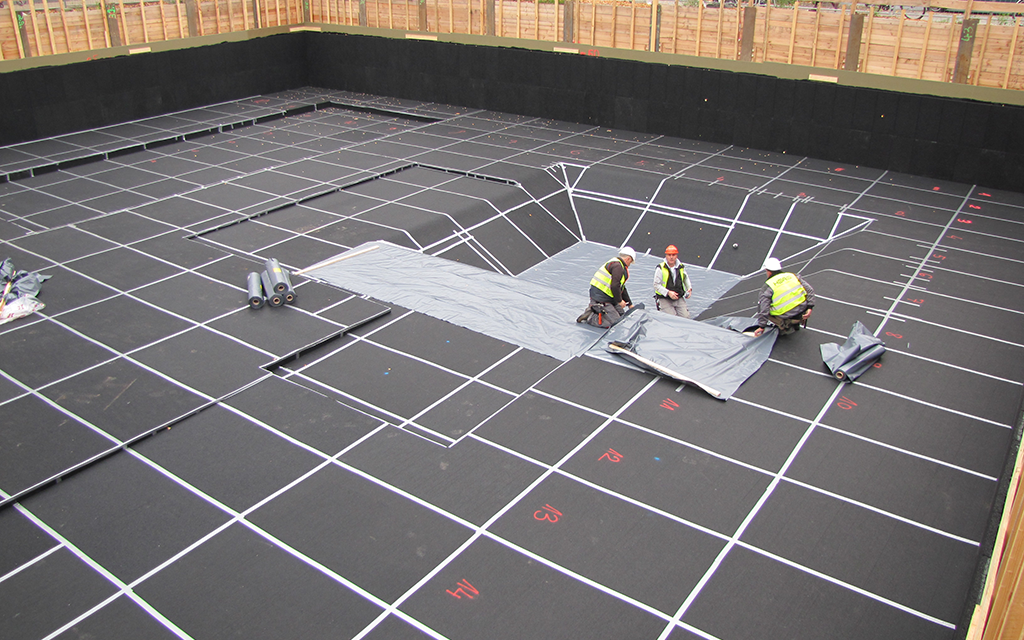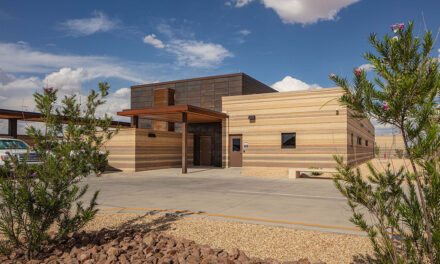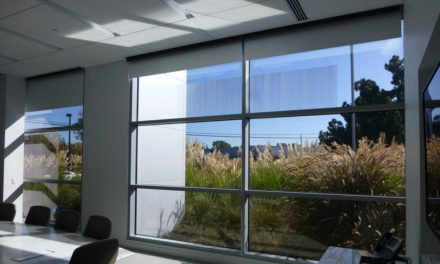During the construction of the building complex at the address Kapweg 3-8 in Berlin from 1994 to 1995, measures were taken to ensure the decoupling of airborne sound from the underground rail tunnel. Regupol® vibration 450, developed by BSW GmbH was used successfully to achieve vibration insulation in this construction project.
Initial measurements of the vibration levels were taken during construction by the Institute for Acoustics and Constructional Physics (IAB) based in Oberursel. In 1996 after completion of the building shell, control measurements on the sides of the building facing the underground railway, on the sides facing the underground car park and on the ground floor walls.

Photo courtesy of Regupol
Repetition of measurements in 2006
This series of measurements was repeated in 2006 by the Institute for Acoustics and Constructional Physics (IAB) on behalf of BSW GmbH, with the aim of determining the extent to which mechanical influences, ground water and ageing had resulted in alterations to the installed insulation layer. The rating values for vibration severity evaluated (Ar) and for the lower reference values (Au) were well below the limits. In the building interior, no negative impact from the underground tunnel could be determined, even after 10 years.
Ten years after installation, the solution showed its suitability for damping the vibrations of passing underground trains in the long-term and proved its insulating capabilities even under the influence of ground water.
Effectiveness after more than 20 years
In July 2018, BSW GmbH again commissioned the IAB to carry out measurements under the same conditions and if possible from identical check points. The aim this time was to check how effective the installed Regupol® vibration 450 insulating layer still was after more than 20 years and to document the material’s ageing behavior.
Past and current measurements also determined ground water levels, with results indicating that the Regupol insulation layers lie in up to 2.5 meters of ground water.
To assess the influences on or changes to the insulating layer, differences in structure-borne sound velocity levels between the diaphragm wall and the building, especially on the cellar exterior wall (underground garage), were shown. The high readings for velocity level differences show how good the decoupling performance is. It can therefore be said that the Regupol® vibration 450 insulation membrane installed by BSW GmbH has the same favorable qualities. No negative influences could be determined from the environment, the ground water or any other factors.

Photo courtesy of Regupol
A Success Story, 25 Years Later
After the installation of Regupol® vibration 450 between 1994 and 1995, measurements were carried on the building complex at Kapweg 3-8 in Berlin, which was adjacent to the under- ground railway, once the building was completed.
After ten years of constant strain and exposure to influences of ground water, possible sediments and other potential disruptive factors, measurements were again carried out in the same positions at the side of the building, on the side walls of the underground garage in the basement and on the ground floor. The test carried out in 2006 showed no signs of any reduction in the insulation effect.
A further series of measurements in 2018 showed that even after 20 years, no negative influences on the insulating effect could be determined, particularly in terms of tunnel resonance.
The results of these measurements after more than 20 years show very clearly that environmental influences such as ground water, sediments, etc. have not led to any reduction in structure-borne sound levels in the Regupol® vibration insulating products.




